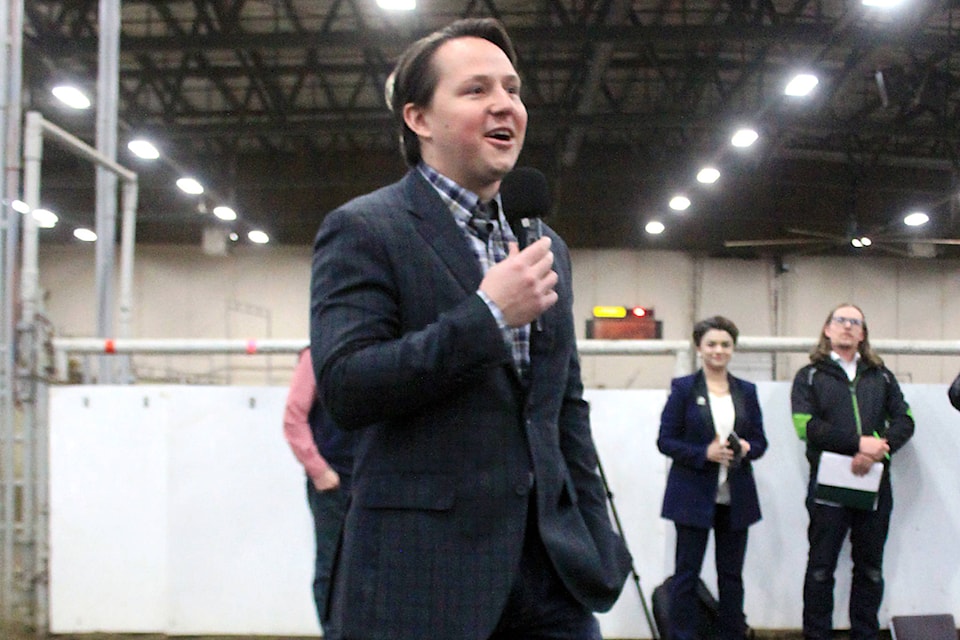A significant change in structure for the province’s largest youth agricultural organization also comes with a tremendously large financial commitment from government.
Alberta’s Minister of Agriculture and Forestry Devin Dreeshen was joined by representatives of 4-H Alberta and others at Ponoka’s Calnash Ag Event Centre on Feb. 22 to announce a 10-year $1 million annual funding agreement by the provincial government to support a newly revamped 4-H body.
“This will really set the stage for 4-H to be successful for the next 100 years,” Dreeshen said, addressing the crowd that included members of the Ponoka Renegade Rider 4-H club who were holding a horsemanship clinic at the Ag Event Centre.
“We understand 4-H does an amazing job at getting sponsors from companies that understand its importance and how 4-H bridges that divide between urban and rural. It’s something that we as a government, especially during the difficult financial time we are in right now, we still see the value of 4-H and want to be able to fund and support all the important programs work it does.”
While the funding is a great step forward for sustainability, more important is the transformation into a unified 4-H organization that comes with it. Work began last August to find out what members had to say, culminating in the new 4-H Alberta.
It will have a single chief executive officer administer and operate both the 4-H Council and the 4-H Foundation that will help to better grow and strengthen 4-H for the future with government also coming on board with money and in-kind support.
“We needed to modernize and transform the current governance and operating and funding model so that the program could continue to grow and expand 4-H to a broader audience. The change happening is for the right reasons, at the right time and going in the right direction, ” said Lanny Anderson, chair of the 4-H Council.
“The feedback we got was remarkable and the participation was outstanding. A report has been compiled with recommendations and next steps so that we can ensure 4-H is around to serve the youth of today in a modern, stable and progressive environment.”
Most of the consultative ground work was done by Kim McConnell and Dianne Finstad with a focus on where 4-H stood, what it needed and what the challenges and opportunities that laid ahead.
“We had to synthesize through that to come up with some practical things that would work to drive things forward,” said McConnell, founder of AdFarm and a board member of the 4-H Canada Foundation.
“First off, the tenets of 4-H will not change, but the organization wasn’t streamlined at all.”
He added that with a government and two organizations with seven regions, 56 districts and 312 clubs, everyone was somewhat confused with some things going on.
“It was all well-intentioned, but just not going in the same direction,” he said.
“So we needed to modernize, needed to be more efficient and needed to revitalize and refresh the governance so that the program could live on at the next level.”
Anderson added there remain a number of decisions to be made and other information to be shared with the 4-H membership, all of which will be distributed at the appropriate time and will be available on their website at www.4h.ab.ca.
Dreeshen also noted the work done on the report will all 4-H to keep building on its history and value to the province.
“The Government of Alberta understands the importance of 4-H and with the three organizations working together trying to come up with decisions at times was difficult,” he added.
“There was tremendous work done consulting with 4-H on how to be a better system. I am ecstatic to see the results of all that work.”
